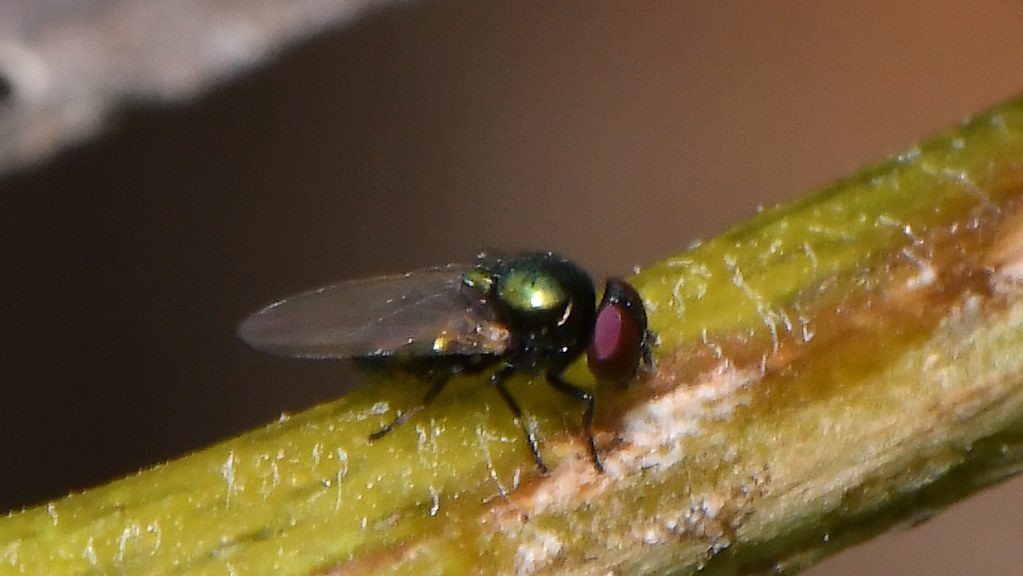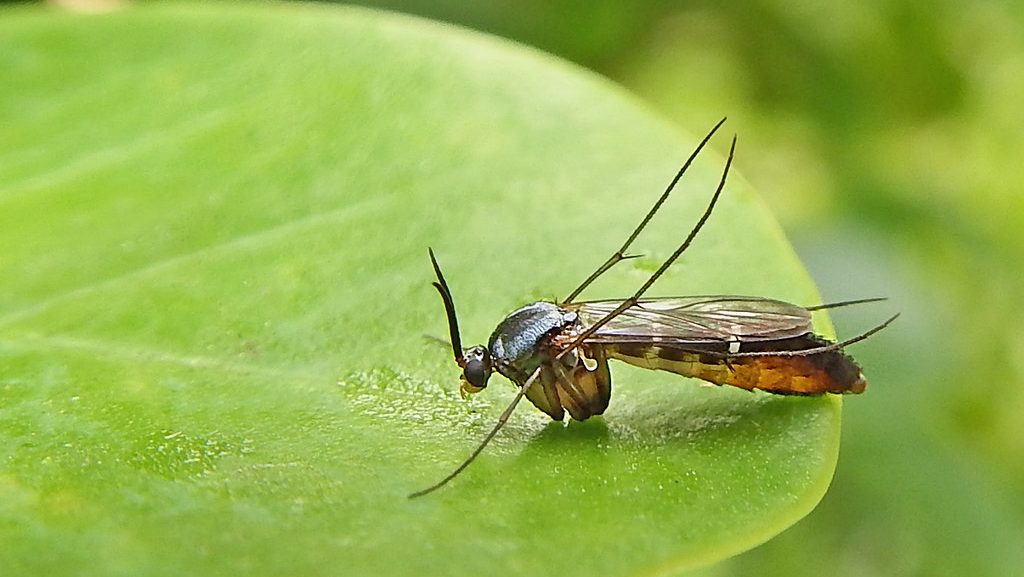Key Takeaways
-
Gnat Lifespan: Gnats live 1-2 weeks indoors and 2-3 weeks outdoors, with variations depending on environmental conditions like temperature and humidity.
-
Lifecycle Stages: Gnats undergo four stages: Egg, Larva, Pupa, and Adult, with the adult stage focused on reproduction.
-
Fungus Gnats: Fungus gnats live 1-2 weeks as adults, but their full lifecycle (egg to adult) lasts 3-4 weeks. They thrive on organic material and moisture.
-
Environmental Factors: Warm temperatures and high humidity accelerate the gnat lifecycle, making moist environments ideal for their survival.
-
Prevention Tips: Keep soil dry, clean drains, dispose of organic waste, use sticky traps, and introduce beneficial microorganisms to control gnat populations.
-
Myth Busting: Gnats can live for weeks, not just 24 hours, and are active indoors year-round. They reproduce in moist environments, including drains and damp soil.
 Gnats are tiny flying insects that annoy us indoors and outdoors. From buzzing around your plants to infesting your kitchen, understanding their lifecycle can help you control and prevent their infestations. Gnats usually live around 2 to 4 weeks, depending on their species.
Gnats have four lifecycle stages: Egg, Larva, Pupa, and Adult. In this article, we will learn more about gnats’ lifespans, find out how long they live, and explore factors that influence how long they live indoors.
Gnats are tiny flying insects that annoy us indoors and outdoors. From buzzing around your plants to infesting your kitchen, understanding their lifecycle can help you control and prevent their infestations. Gnats usually live around 2 to 4 weeks, depending on their species.
Gnats have four lifecycle stages: Egg, Larva, Pupa, and Adult. In this article, we will learn more about gnats’ lifespans, find out how long they live, and explore factors that influence how long they live indoors.


Not getting a solution?
Get your free pest control estimate today!How Long Do Gnats Live Indoors And Outdoors?
Gnats live for about one to two weeks indoors. They prefer living in humid environments with access to moisture and organic material like food scraps or potted plants. Inside homes, they often gather near drains, trash bins, and damp areas where they can lay eggs. After laying eggs, adult gnats die shortly, as their primary purpose is reproduction. Without consistent moisture or food, they live even shorter lives. Air-conditioned spaces with low humidity reduce their chances of survival, further shortening their lifespan. Outdoors, gnats live for about two to three weeks. They survive longer in warm, humid weather where they find plenty of moisture and food from decaying plants, fungi, and moist soil. Outdoor conditions give them more access to breeding sites and natural food sources, supporting a longer lifespan than indoor gnats. However, exposure to predators, weather changes, and other environmental factors can cut their lives short. When conditions stay favorable, they complete their life cycle and live out their full lifespan. Visit our Species, Control, and DIY Guide sections for additional resources on gnats and ways to tackle a gnat infestation.
Gnat Lifecycle
- Gnats have four key stages in their life cycle: egg, larva, pupa, and adult. Let’s us take a quick look at each stage:
-
Egg Stage: Female gnats lay eggs in moist, organic-rich environments like soil or decaying plant matter. These eggs typically hatch within 2-3 days when warmth and moisture are present, making overwatered potted plants an ideal site for egg-laying.
-
Larval Stage: The eggs hatch, the larvae spend 7-14 days feeding on organic material found in the soil. This feeding period is crucial for their development, as they gather the nutrients needed for the next phase. The larvae often appear as small, whitish worms that are sometimes visible in damp soil.
-
Pupal Stage: After the larval stage, gnats enter the pupal stage, which lasts about 3-4 days. During this time, the larvae undergo metamorphosis, transforming into adults. The pupae remain buried in soil or organic matter, making them difficult to detect.
-
Adult Stage: Once the transformation is complete, adult gnats emerge, ready for their final stage of life. Adult gnats typically live for 1-2 weeks, depending on the species. Their primary purpose during this stage is reproduction, with female gnats laying eggs to continue the cycle.
[/bullet
This constant process of egg-laying and metamorphosis ensures the ongoing presence of gnats in environments where warmth, moisture, and organic material are abundant.
-
Temperature: Warmer environments shorten the lifecycle, accelerating egg hatching and larval development.
-
Humidity: High humidity fosters the growth of fungus and other organic matter, providing an ideal habitat for gnats.
-
Food Sources: Organic-rich soil, decaying plant matter, and spilled food attract gnats and sustain their lifecycle.
-
Control Measures: Timely interventions, such as drying out the soil or using traps, can drastically reduce their lifespan.
What Factors Affect Gnats’ Lifespan Indoors
Several environmental and biological factors determine how long gnats survive indoors.Factors Influencing Gnat Lifespan
How Long Do Fungus Gnats Live?
Fungus gnats have a short lifespan, typically living for about one to two weeks as adults. However, their complete lifecycle — from egg to adult — lasts around three to four weeks. The adult stage is mainly focused on reproduction, with female gnats laying eggs in moist soil or organic matter. The eggs hatch, and the larvae feed on fungi, decaying plant material, and sometimes plant roots for 7 to 14 days before entering the pupal stage. The pupal stage lasts around 3 to 4 days, after which the adult fungus gnats emerge to continue the cycle. Environmental factors like humidity, temperature, and access to moisture significantly influence their survival and reproduction.
If you suspect gnat infestation, it is advised to contact pest control professionals. Our team can provide a customized approach to protect your home effectively.
The pupal stage lasts around 3 to 4 days, after which the adult fungus gnats emerge to continue the cycle. Environmental factors like humidity, temperature, and access to moisture significantly influence their survival and reproduction.
If you suspect gnat infestation, it is advised to contact pest control professionals. Our team can provide a customized approach to protect your home effectively.
Tips to Prevent Gnat Infestations
-
Keep Soil Dry
-
Use Sticky Traps
-
Clean Drains
-
Dispose of Organic Waste
-
Introduce Beneficial Microorganisms
| Myth | Fact |
|---|---|
| Gnats live only 24 hours. | Some live for weeks. |
| Gnats are only active inthe summer. | They thrive indoors year-round. |
| Gnats are baby flies. | They are distinct insect species. |
| Gnats don’t reproduce indoors. | They lay eggs in soil, drains, and damp areas. |
| Gnats are harmless. | Some bite and spread diseases. |





